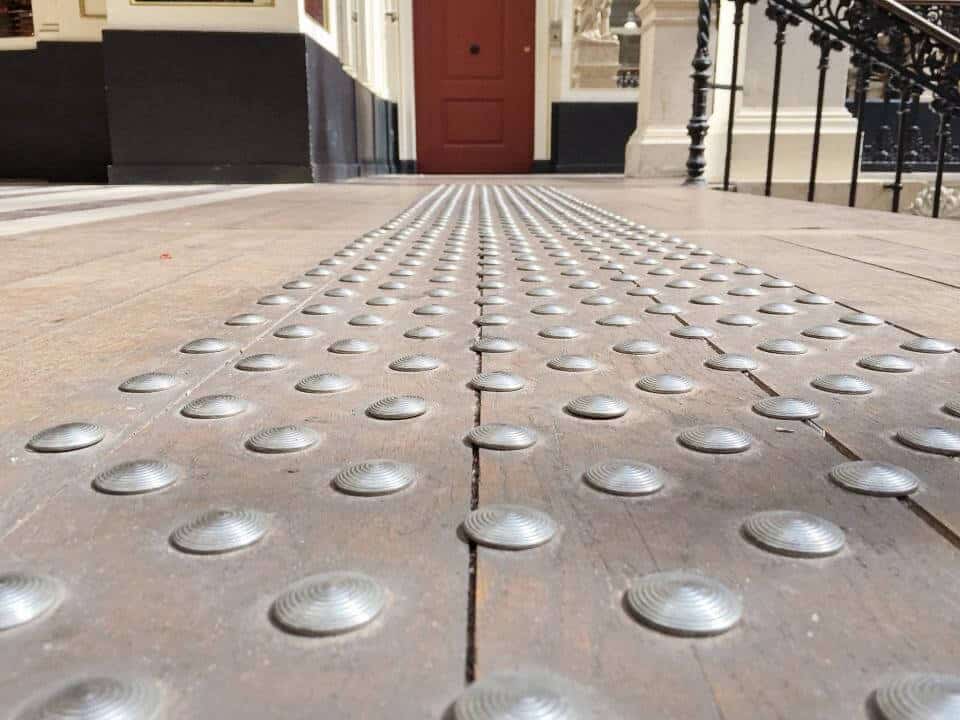 There is no doubt that your workspace profoundly impacts employee performance, company growth, and brand value – but figuring out how to optimize your work environment can be a challenge. We sat down with Matt Watson, an expert in workspace transitions to share his insights for maximizing workspace effectiveness.
There is no doubt that your workspace profoundly impacts employee performance, company growth, and brand value – but figuring out how to optimize your work environment can be a challenge. We sat down with Matt Watson, an expert in workspace transitions to share his insights for maximizing workspace effectiveness.
Matt Watson is VP of Development and Co-Owner at Apex Facility Resources, a leading workspace transition partner that collaborates with businesses and institutions ranging from startups to large corporations across North America. Matt leverages innovation, expertise, and creativity to solve complex space management problems, every day. We asked him to tell us how he came to specialize in workspace strategy, planning, and solutions.
MW: I started on the moving trucks back in the early 80’s, and relocating offices and furniture when I was in college. When I got out of school, I began doing relocation sales for a small moving company in Seattle. This was early in the days when Seattle was really starting to explode – I guess it would be the mid-1980’s and our first big growth cycle started then. I started getting into commercial relocation and in the mid 90’s I wound up going to a commercial relocation company in Seattle. I moved over there selling primarily facility relocation and facility services. So as I acquired large accounts I started doing more and more work for them both on daily facility support services (ie. move and change) as well as strategic relocations of their facilities – both within my market as well as nationwide (basically throughout North America).
So as that started evolving, my wife started Apex Facility Resources in 1997. At the time she was supporting a large refurbishing solution that we were providing for one of our customers. Apex evolved out of refurbishing into a full-service commercial furniture and relocation company. I finally left the moving company in 2004 and joined Apex to integrate all the facility support services together with our commercial furniture solutions. Today we are an integrator of services and product solutions to support workspace transitions.
Matt believes that his client’s biggest need is a flexible, nimble workspace, and a need to shift gears with their people and their workspace to accomplish their goals more quickly. He tells us how Apex is able to disrupt the traditional buying process to introduce workspace product solutions designed for change.
MW: So the traditional process is typically driven by A&D from a design perspective, sometimes with strategic programming involved in the early stages. Or it may start with a broker before the A&D gets involved just speaking on a certain minimal level around programming and requirements and then they go shopping for workspace. So what that results in is a workspace solution that we generally have to ‘fit the square peg into a round hole’ by the time we are getting involved.
We recommend having a programming meeting with the client before A&D and brokers get involved. We review their current work styles, employee demographics, and technologies. We identify what is working, not working and a cultural necessity before we make recommendations. We bring nearly 20 years of experience re-configuring and solving workspace challenges to the planning process to help customers avoid the classic problems resulting from the “old school” space search process. By bringing our logic and learnings from reconfiguring and reorganizing to the front end of the space planning process the client can actually articulate from the beginning what their requirements will be going into the workspace search process with a broker
Apex uses an integrated, single-source process to eliminate the use of multiple vendors and ensures that projects are delivered on time and on budget. Making Apex a one-stop solution for planning, furnishing, relocating and expanding a workspace.
MW: We believe, and we actually can say this for a fact that when we are involved early we can benefit the broker, saving them time, money and effort in searching for the right building for the client. We can also help the architect and the owner save time and money because they are working with a client who can articulate their needs – we aren’t trying to take over design but what we are saying is functionally they understand what they need in a workspace. So that would include size and layout of the actual workstations, conferencing, learning and social space for collaboration. We leave the design elements to our A&D partners who make visual miracles happen!
We know, because by the time we get referred in or by the time we get asked to participate, usually the brokers found a building, they have a letter of intent, if not they have already initiated a lease and we are trying to support the architect executing furniture and most of the time – I’d say 70% of the time it is trying to pound the square peg into a round hole.
As VP of Development for Apex, we asked Matt to tell us more about an average day in his shoes.
MW: I love my job because of two things, I get to network with some of my closest friends who are brokers & builders in our community so I really have strong bonds and relationships with those guys and I can be their subject matter expert answering questions on challenging client workspace requirements. So I get to be a problem solver. Then the other part of that is that the trust that’s gained from those opportunities result in business for my company.

When designing space, Matt recommends taking into consideration the four primary work modes (focus, learning, collaboration and social), however, it isn’t about designing space for one work mode, rather it is a hybrid approach. We need to design space that multiple work modes can take place within the environment of the space or be supported functionally by furnishings that can be adapted to each work mode.
MW: A great example is a small meeting room or small reading room that can evolve into an executive private area. About 70% of the customers we have out here are tech, we are in a very explosive market being in the center of the universe for Cloud computing (Amazon & Microsoft HQ here). So we have customers with a high velocity of growth and commercial real estate problems like you wouldn’t believe. Our goal is to densify space but still enable workspace functionality. We just moved a client in December and we are already resetting their space six months later to accommodate unexpected growth.
What we find now is the work modes are merging. We also find that policy and training of how to use modern workspace is a challenge without a focus on change management. There is a huge opportunity in change management in the mid-market because the architects are probably – in my case out here – too busy to do it and not many of them are qualified to do it. And then the actual consulting parts that are out there doing it aren’t really in our community to the extent they could or should be. And then the client doesn’t always see value which is where they really need to manage their workspace and their evolution in that workspace.
So change management is really key and then what’s really happening here is those work modes are really evolving so dramatically now, we are trying to figure out how to incorporate huddle space in open plans like everyone is and we are trying to do that creatively with smaller kind of meeting labs and doing that without spending a ton of money on build out and those are all kind of modern day problems with interesting solutions that we are trying to spin out for them.
With over 30 years of experience, we asked Matt what changes he has observed in workspace strategy and how the changes relate to the role of FMs.
MW: What’s really interesting is six to eight years ago we were building spaces where we just installed the typical 6 x 8 up and they said ‘that’s fine, that will work.’ At break time or when it’s time to get lunch employees would go to the break room and when they wanted to hang out with a buddy they’d go outside or go sit on a sofa some place. I think what’s happened is this whole emergence of the casual conference social evolution and having that be more of a work style that the younger generations really enjoy. I think the evolution of wireless technology and in Cloud computing have enabled such a dynamic work environment regardless of where or how you work. So those two things, the preferences of the younger generation and the dynamics around technology are turning this entire industry on its ear. If I was a file cabinet manufacturer I would be very concerned – that, and floor mats.

Matt tells us how he doesn’t sit or stand in his workspace – he perches. Using a perching stool he is able to ‘semi-sit’ and reduce the strain from either standing for long periods or from getting up and down from full seating positions. Believing in the value of testing his products to provide personal experience when he recommends them to clients we asked him to share the three hottest products trending in his market right now.
Power Data Beam
MW: I have been pretty hot on the power data beam. We have been doing this for about three years and I’ve been asking for it for about five. What power data beams do is they deliver power and data communication infrastructure very flexibly within a floor plan without having to have a full height panel and with zero creep. We do a lot of work for a large social media company in our market and the world’s largest online retailer and some of those guys don’t even have beams. They just have a pile of power and data wires that just dangle on the floor and they are cool with that. We like to have a little safer delivery system and a little cleaner delivery system so that’s one of the hotter things that we do.Sit-to-Stand Tables
MW: Of course sit-to-stand tables bases are very hot. In our market prices have come down dramatically from what they used to be and we have probably five different manufacturers on our studio floor, but I probably have five or ten more knocking on the door saying they have a better mousetrap.Monitor Arm Solutions
MW: And I think the other cool thing happen is an evolution around monitor arm solutions that are supporting the growth in monitors. No longer are people working on 24” they are going to 27”, 32” and 47”. Now we are looking at how do we deliver monitors without taking up all the table space and do this in a way that is ergonomic for the person when they sit and they stand. So what that led to are dynamic monitor arm solutions.
Apex integrates office furniture, office products and facility services to deliver innovative workspace solutions built for the changes ahead. Matt tells us the ability to plan for scale is one of the biggest challenges in the future of workplace strategy.
MW: I think that the real rub I see in the industry now are start-ups with financing for two to three years and growing orgs that are big enough to be in 50,000 square feet and so what do they do? They can’t afford to sign a five to ten-year lease. The disconnect between startup financing and commercial leasing presents a huge opportunity for traditional leasing models to change and I think it is shifting and pushing models to change.
Many of my tech clients can’t even predict how quickly they are going to scale. Most of them are on series B or series C funding and won’t commit to a five-year lease. We have multiple 100 to 300 person companies who we have moved into one to three-year subleases. We’ve moved each of them several times in the past three years Because they don’t know if they are going to double in size in the next 12 months. I think coworking space is solving that for the smaller guys but they aren’t solving the problem for the mature 30 employee plus companies.
We asked Matt to share a couple examples of bizarre situations he has experienced in his role and what he learned from those experiences.
MW: Most of the time it’s in the relocation process. My fundamental upbringing was in the moving business. Since moves happen in minutes, hours and days, unlike big installs, you don’t have time to think, you need to react and I’ve had a couple interesting cases. One case I was moving a circuit board manufacturer with multiple manufacturing lines to an area called Everett (where Boeing builds planes). The client literally bought another company in the middle of the move that we had to move in with the original company machinery. It was a hurry up redesign the new space including infrastructure and then move everything in. So these kind of things happen.
We just did a 3,000 station disposition, for a big wireless communication company that’s headquartered here. They downsized their campus and gave back an entire building out of the effect of that effort. We did about 3,000 moves in a 2,200 station dispo. We had to figure out how to make 2,200 8 x 8 workstations go away? Not easy when We are in the corner of the country, 1,200 miles away from LA and 2,000 miles away from Chicago – there is no major market that is going to buy all this stuff and it generally goes to the landfill. But we figured out a way to recycle and repurpose 60-75% of it so it didn’t end up in a landfill.
I think some of those types of large projects that have to happen in very short periods of time with positive results are the most fun stories to tell. That is some of the fun and crazy stuff that we actually love to say yes to because we take pride in being flexible and nimble enough to say yes. In fact, we grew our business by saying yes to customers like that.
Looking for help with your workspace transition? Get in touch with Matt by emailing him at [email protected] or give him a call at 206.391.0689.
Do you have any tips for effective workspace transitions or strategies to plan for scale? Share them in the comments below!
Photos: Wilfred Ivan, Peignault Laurent, Tran Mau Tri Tam, Snappa.io




